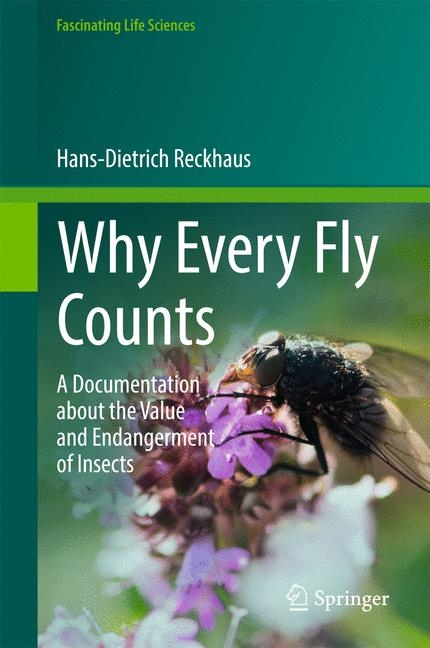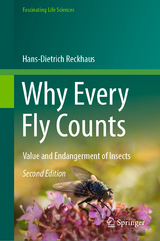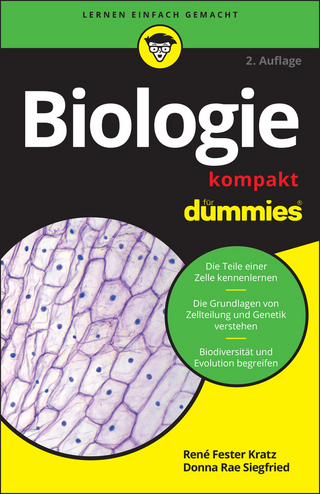
Why Every Fly Counts
Springer International Publishing (Verlag)
978-3-319-58764-6 (ISBN)
- Titel erscheint in neuer Auflage
- Artikel merken
Dr. Hans-Dietrich Reckhaus pursued his studies in business administration at the University of St. Gallen, which he completed in 1993 by receiving his Dr. oec. He has headed Reckhaus GmbH & Co KG in Bielefeld since 1995 in the second generation as the executive manager. With the quality seal „Insect Respect“ launched in 2012, Reckhaus strives for sustainable transformation in his sector. He was awarded the German Visionary Prize for this in 2014. This globally unique compensation model was triggered by a dialog with the Swiss conceptual artists Frank and Patrik Riklin. They initiated the countermovement „saving instead of killing“ and in 2012, implemented the „Saving the flies“ action together with Hans-Dietrich Reckhaus. The entrepreneur regularly gives lectures and publishes about issues regarding SME leadership and sustainability.
Foreword
Introduction
1. Insects as Beneficials
1.1 Insects Pollinate Plants
1.1.1 Pollination
1.1.2 Plants and their Pollinators
1.1.3 Flies, the Unknown Pollinators
1.1.4 The Value of Insect Pollination
1.2 Insects Accelerate Plant Growth
1.3 Insects Promote Biodiversity
1.4 Insects Connect the Food Chain
1.5 Insects as the Most Important Element of Nutrition
1.5.1 Insects as Food
1.5.2 Insects as Feed
1.6 Insects Help Considerably with Hygiene
1.7 Insects as Inexpensive Biocide Alternatives
1.8 Insects Support the Economy and Society Science, Textile Production, Medicine, Chemistry, Criminology
2. Insects as Pests
2.1 Insects as a Danger to Humans
2.1.1 Virus-Transmitting Insects
2.1.2 Causes and Trends of Virus Transmission
2.1.3 Diseases that Are Caused by Mosquitoes: Chikungunya Fever, Dengue Fever, Yellow Fever, Japanese Encephalitis, Leishmaniasis, Malaria, St. Louis Encephalitis, West-Nile Fever
2.1.4 Diseases that Are Caused by Ticks: Tick-Borne Encephalitis (TBE), Crimean-Congo-Hemorrhagic Fever, Lyme Borreliosis, Q-Fever, Rickettsia
2.1.5 Other Dangers Caused by Insects: Tsetse Fly, Sarcoptes, "Killer Bees", Wasps and Bees, Dust Mines, Fleas, Lice, Oak Processionary Moth
2.2 Insects as a Danger to Animals
2.2.1 Nagana
2.2.2 Bluetongue Disease
2.2.3 Schmallenberg Virus
2.2.4 Louping Ill
2.3 Insects as a Danger to Plants
2.3.1 Agricultural Damage in Developing and Threshold Nations: Danger to the Manioc Plant due to Insects, Spreading of Fruit
Flies, Locust Infestations, Storage Pests
2.3.2 Agricultural Damage in Europe: European Corn Borer, Introduced Pests, "Post-Harvest" Damage
2.3.3 Forest Damage
3. Insects Today and in the Future
3.1 Anthropogenic Effets on Habitats
3.1.1 Climate Change
3.1.2 Urbanization and Traffic
3.1.3 Agriculture
3.1.4 Sulfur and Nitrogen Emissions
3.1.5 Forestry
3.2 Population Development
3.3 Outlook
4. Conclusion: Hated, Threatened and Worth Protecting
List of Insects
Glossary
Notes
Why Every Exchange Counts (Thanks)
"Reckhaus, educated as an economist with biocide manufacturing as a vocation, offers readers a thoughtful consideration of what value they might assign to a fly. ... The text is helpfully illustrated with color photographs; references are provided for each chapter, and a glossary can be found at the back. This is an excellent overview of insects by a citizen scientist. ... Recommended for undergraduate collections." (M. K. Harris, Choice, Vol. 56 (1), September, 2018)
| Erscheinungsdatum | 10.07.2017 |
|---|---|
| Reihe/Serie | Fascinating Life Sciences |
| Zusatzinfo | XIII, 111 p. 19 illus. in color. |
| Verlagsort | Cham |
| Sprache | englisch |
| Maße | 155 x 235 mm |
| Gewicht | 348 g |
| Themenwelt | Sachbuch/Ratgeber ► Natur / Technik ► Naturwissenschaft |
| Naturwissenschaften ► Biologie ► Ökologie / Naturschutz | |
| Naturwissenschaften ► Biologie ► Zoologie | |
| Schlagworte | Applied Science, multidisciplinary • Beneficials • biodiversity • Biomedical and Life Sciences • Development • Ecological science, the Biosphere • Ecology • Entomology • Insects • mathematics & science • Mathematics & Science • Pests • Popular Life Sciences • Popular science • Zoology: insects (entomology) & other invertebrate • Zoology: insects (entomology) & other invertebrate |
| ISBN-10 | 3-319-58764-1 / 3319587641 |
| ISBN-13 | 978-3-319-58764-6 / 9783319587646 |
| Zustand | Neuware |
| Haben Sie eine Frage zum Produkt? |
aus dem Bereich



